

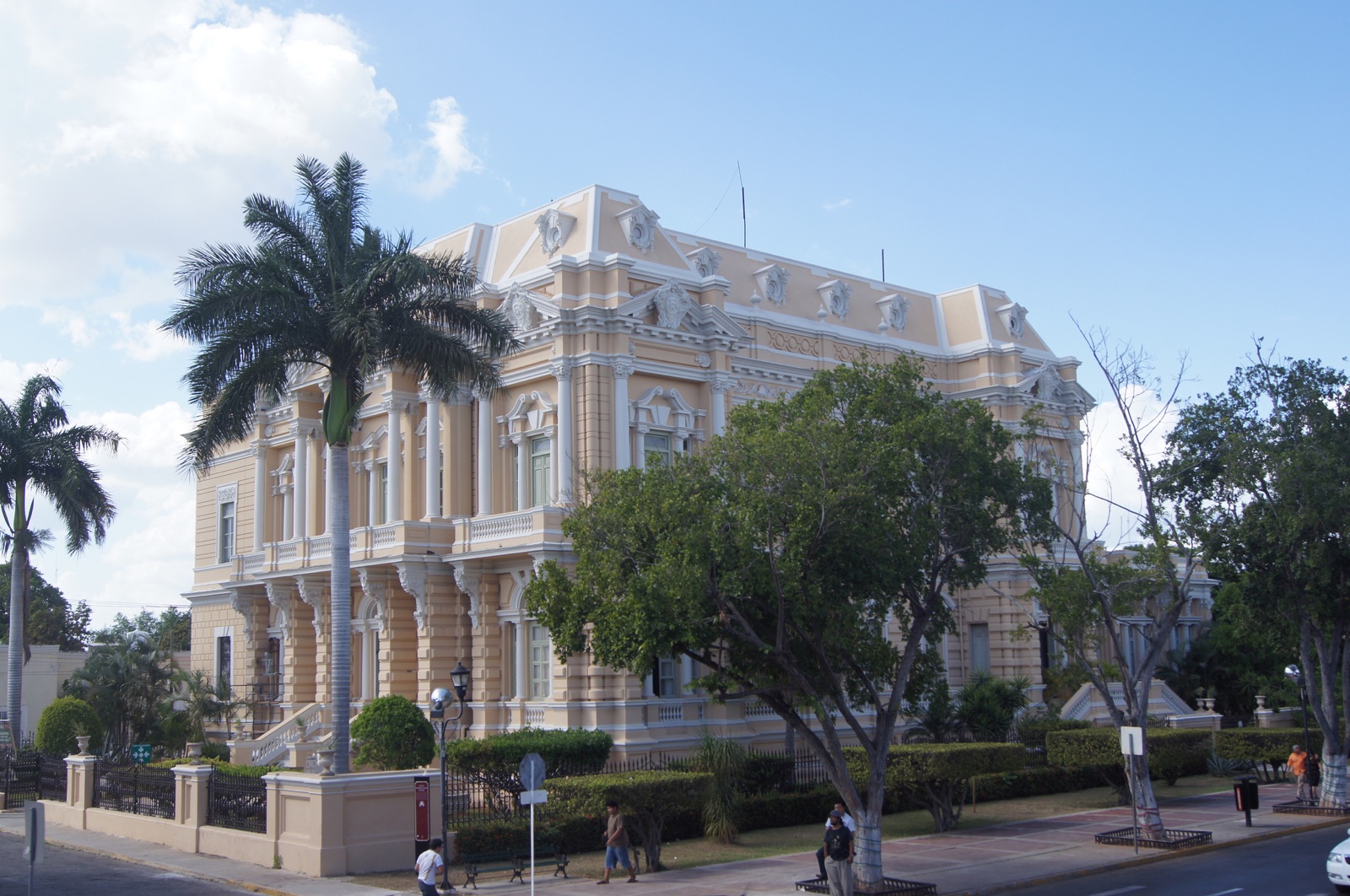
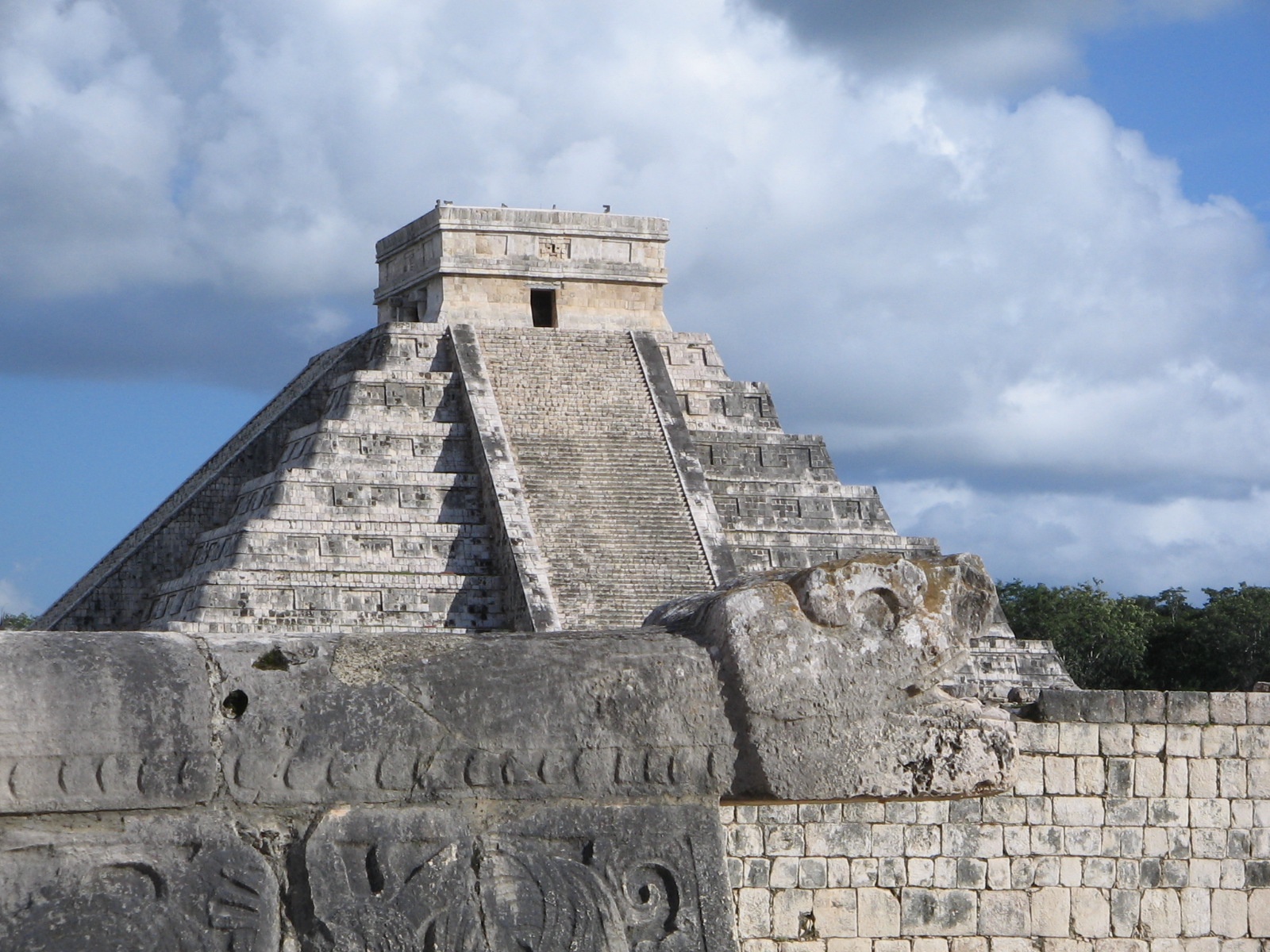
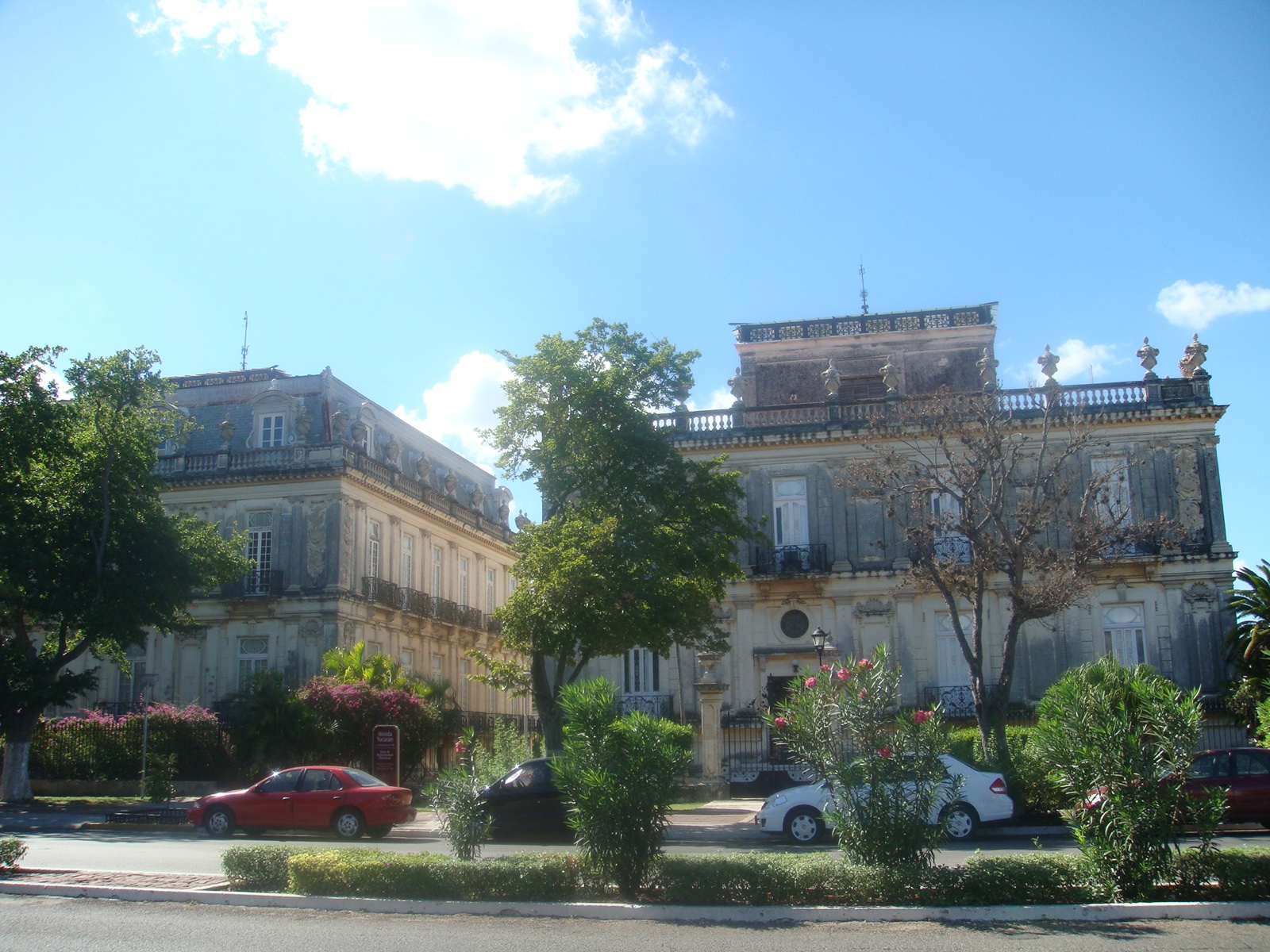


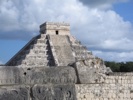
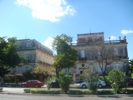
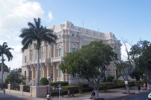

The oldest structure, Temple I, is exposed on the west side of the structure, at the pyramid’s base. This section dates from approximately the 6th century AD, deduced from a date inscribed on the door lintel and radiocarbon dating. The façade of this structure is heavily decorated with masks of the rain god, Chaac, a characteristic of the Chenes style of architecture, though the masks may have been added at a later date. The rest of the structure is covered by subsequent construction. The passageway that led to this structure was closed off after the drenching rains of Hurricane Gilbert in 1988 in order to assure the preservation of the building. Temple II can be entered through an opening in the upper part of the eastern staircase. This temple is only partially excavated. Its central chamber is supported by columns and it has a roof comb that is visible through a trench in the floor of Temple V above. Temple III is built onto the rear of Temple II and is not visible from the outside. It consists of a small central shrine and an antechamber. Temple IV is entered from the west side and has the richest decorations. Constructed in the Chenes style, the temple’s façade represents the mask of Chaac, whose jaws serve as the door. The façade of this structure is entirely covered with masks of the rain god and lattice ornamentation (Stierlin 66). Both upper temples are heavily influenced by the Chenes architectural style (Helfritz 149). Temple V, also known as The House of the Magician or Soothsayer, is the final building phase of the pyramid. This structure sits atop the pyramid and dates from the ninth century. Temple V is composed of three rooms and also exhibits lattice ornamentation. There are two staircases that lead to the top of the pyramid, both at a steep 60° angle. The Eastern Stairs are the wider of the two, starting from the base of the structure to the upper temple. Near the top of the eastern stairs is a smaller inner temple that cuts into the stairway itself. There are two staircases that lead to the top of the pyramid, both at a steep 60° angle. Pictured here are the Western Stairs that overlook the Nunnery and are richly decorated compared to the eastern side. Along both sides of this narrower staircase, images of the hooked-nose rain god Chaac line the steps. As worshipers climbed the stairs to the upper temple, they would be ceremoniously climbing the "Stairways of the Gods" towards the sacrificial altar. Sources listed in Wikipedia A map of Uxmal is here: www.cancun.bz/uxmal_map.php